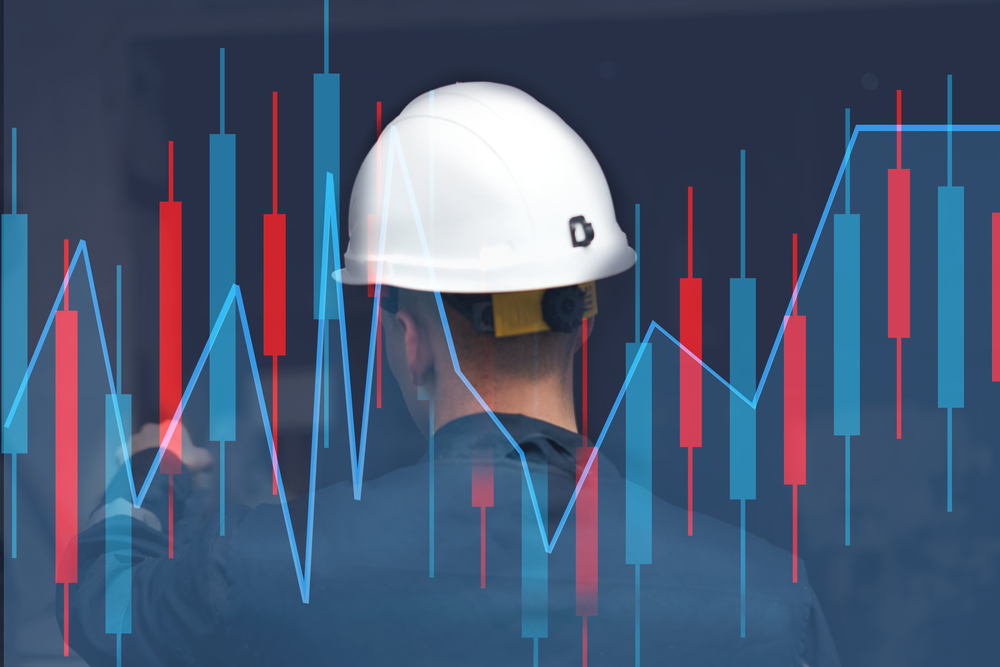You probably have a sense that handling your company’s workers’ compensation claims is related to managing your company’s compliance with federal or state occupational safety and health laws and regulations. However, there are differences.
Workers’ compensation is administered at the state level, and the laws and their implementation can vary from state to state. Workers’ compensation laws shield employers from liabilities for workers’ injuries, illnesses, and deaths, while the required insurance coverage provides for the costs of workers’ medical treatments and lost wages or provides death benefits to a surviving spouse and children if a worker is fatally injured on the job.
The federal Occupational Safety and Health (OSH) Act of 1970 governs all workplace safety and health regulation and enforcement. The act created the Occupational Safety and Health Administration (OSHA), a federal agency within the Department of Labor. OSHA develops workplace safety and health standards that apply nationwide.
About half of U.S. states operate their own state programs for occupational safety and health. However, there is little variation in workplace safety compliance requirements from one state to the next because the federal agency approves and monitors state programs, and state regulations must be “at least as effective” as federal standards.
The purposes of state workers’ compensation laws and the federal OSH Act differ slightly, and dealing with both can lead to competing and overlapping responsibilities. One company may assign those responsibilities differently than the next one. Safety managers may be solely responsible both for OSHA compliance and overseeing the workers’ compensation program. Other companies may assign workers’ compensation responsibility to benefits staff within the Human Resources department.
If you’re tasked with responsibility for both safety and workers’ compensation, your days may be taken up by:
- Ensuring compliance with the OSH Act’s General Duty Clause and requirements of several federal or state safety standards.
- Responding to workplace injuries and illnesses; ensuring that sick or injured employees receive first aid or proper medical attention; and administering workers’ compensation claims, assisting employees in filing claims, and navigating the insurance system.
- Monitoring workers off duty due to workplace injuries and illnesses, remaining in contact with workers and confirming they are receiving proper treatment, and making progress in rehabilitation and recovery.
- Overseeing an injured worker’s return to work or a light-duty program if the worker has not yet recovered enough to resume regular duties. The end goal is always the employee’s return to regular duties.
- Containing your company’s costs for workers’ compensation claims or premiums.
Your EMR and Premiums
A key factor in determining your company’s workers’ compensation insurance premium is the experience modification rate (EMR). Your company’s EMR is found using a formula that includes your company’s claims history and safety record compared with the claims and safety experience of other companies in your industry.
If your company has an EMR of 1.0, then your company has an average level of risk for your industry. An EMR below 1.0 indicates a lower risk—a better-than-average safety performance for your industry—and an EMR above 1.0 indicates a higher-than-average risk, reflecting worse safety performance or more claims than your industry’s average. A higher EMR usually translates to higher premiums. Your premium rates reflect both the risks inherent in your industry and your company’s individual claim history.
Here’s where the safety function and workers’ compensation responsibilities overlap: The best way to contain claims and lower premiums is also the best defense against being inspected and cited by OSHA: preventing accidents, illnesses, and injuries.
Your number of recordable injuries is monitored by OSHA, and the agency’s area offices target employers with higher-than-average injury rates for their industry. Your injury rate can also affect your company’s ability to win contracts. Your insurance carrier will set your workers’ compensation insurance premiums based on the number of injuries and claims at your facilities or worksites.
Disabilities due to workplace injury cost businesses more than $59 billion annually, according to Liberty Mutual Insurance. According to Liberty Mutual’s latest Workplace Safety Index, the causes of the costliest workplace injuries are:
- Handling objects, costing $13.98 billion annually;
- Falls on the same level, costing $10.84 billion;
- Being hit by objects, costing $6.12 billion;
- Falls to a lower level, costing $5.71 billion;
- Awkward postures, costing $4.69 billion;
- Vehicle crashes, costing $3.56 billion;
- Slips or trips without a fall, costing $2.06 billion;
- Repetitive motion involving microtasks, costing $2.05 billion;
- Colliding with objects, costing $2 billion; and
- Running equipment or machines, costing $1.92 billion.
These top risks include three of the “fatal four” safety hazards—caught in/between, electrocution, falls, and struck-by hazards—that are responsible for the most workplace fatalities.
Watch Out for ‘Near Misses’
Closely monitor “near misses.” Just because you haven’t had a compensable or recordable injury in a while doesn’t mean you’re safe. You should never become complacent. Keeping an eye on “close calls” can alert you to potential accidents and injuries before they happen. Research has shown that for every workplace accident that occurs, there are more than 600 near-miss incidents.
Keeping an eye on close calls can bring your attention to common workplace hazards or mistakes your workers and supervisors could be making every day. It may only be a matter of time before these repeated mistakes or uncontrolled hazards could lead to an accident or injury.
Thoroughly investigate all accidents and near misses, and make appropriate changes in your policies and procedures. These kinds of precautions could help reduce the number of claims your company files, reducing premiums and lowering the chances of an OSHA inspection or violation.
Encourage your workers and supervisors to report all accidents and close calls. The more incident data you have, the more easily you can perform an accurate analysis of your company’s risks.
If an accident or a near miss doesn’t result in a recordable injury or illness—if it doesn’t lead to loss of consciousness or require medical attention beyond first aid or days away from work or reassignment—it doesn’t factor into your company’s injury rate that OSHA uses in its inspection planning. A recordable injury isn’t necessarily a compensable one if it doesn’t result in medical costs or lost wages.
You should investigate all accidents, injuries, and close calls immediately but also track incidents over time so you can perform an analysis of trends.
By encouraging prompt reporting and addressing hazards in a timely fashion, you could prevent future incidents that could result in expensive workers’ compensation claims or higher insurance premiums going forward.
However, the analysis of an incident needs to be a blame-free evaluation. You want to get to the root causes so you can adjust your workflows, procedures, and policies. Maintaining a cool composure when dealing with an incident will allow you to develop an effective safety intervention, preventing future claims or OSHA penalties from injuries due to similar causes.
Corrective actions aimed at improving employee health and safety can also improve the chances of employee compliance with any changes you make to your policies or work procedures.
Incentive Program Cautions
You also want to be careful with safety incentive programs that discourage reporting. It’s what you don’t know that can cause you problems later. A safety incentive program could set you up for trouble if it interferes with getting the kinds of data you need to effectively manage safety.
Workers may also get the wrong message from a safety incentive program. Just because they’re focused on winning awards like gift cards doesn’t mean they’re performing their duties with firmly ingrained safety behavior.
Just as underreporting limits the amount of data you have to use in performing root cause analyses, it could also set you up for a whistleblower complaint and an OSHA investigation.
Safety, Health Management Program
A well-administered safety and health management program at your company could help reduce the legal, medical, and other costs resulting from workers’ compensation claims.
You can improve your company’s OSHA compliance while bringing down your premium costs and the cost of workers’ compensation claims by implementing a safety and health management program that includes the following elements:
- Management leadership or “buy-in,” making a commitment to continually improving worker safety and health and communicating that commitment to workers, as well as setting program expectations and responsibilities;
- Worker participation, ensuring that your workers and their representatives are involved in all aspects of the program and that employees understand their roles and responsibilities within the program;
- Hazard identification and assessment, continually identifying workplace hazards and evaluating risks by identifying and assessing the hazards of routine, nonroutine, and emergency situations;
- Hazard prevention through a hierarchy of controls, selecting interventions according to a hierarchy that uses engineering solutions first, followed by safe work practices, administrative controls, and then personal protective equipment (PPE);
- Employee and supervisor education and training, clearly communicating hazards in the workplace and preventive practices under the program, as well as training employees in their responsibilities within the program and training managers and supervisors in safety concepts and their responsibilities for protecting employee safety and health; and
- Program evaluation and continual improvement that includes investigating incidents and developing new policies and workplace safety rules to address emerging or newly uncovered hazards.
You also need to communicate the particulars of your safety and health management program with any contractors or staffing agencies. Staffing agencies need to clearly understand where your responsibility ends and theirs begins, and you may need to negotiate responsibility for training a staffing agency’s employees.
If a staffing agency’s employee becomes injured, OSHA could cite you and the staffing agency for violations.
Safety Committee
You may also want to form a safety committee to monitor hazards and help develop safety interventions, although your workers’ compensation insurance carrier or the state workers’ compensation agency may require you to have one. If you have a union-affiliated workforce, one or more of your contracts may require one.
Having a safety committee may involve the following:
- Committee membership that includes employees and their union representatives, managers, and supervisors;
- Holding monthly or quarterly meetings;
- Maintaining records of meeting agendas, meeting minutes, and committee decisions and recommendations; and
- Developing and implementing workplace safety and health committee inspection procedures.
Compliance requirements under the OSH Act and responsibilities for administering your company’s workers’ compensation coverage may differ, but addressing hazards and implementing controls for injuries and illnesses will help you fulfill both.



